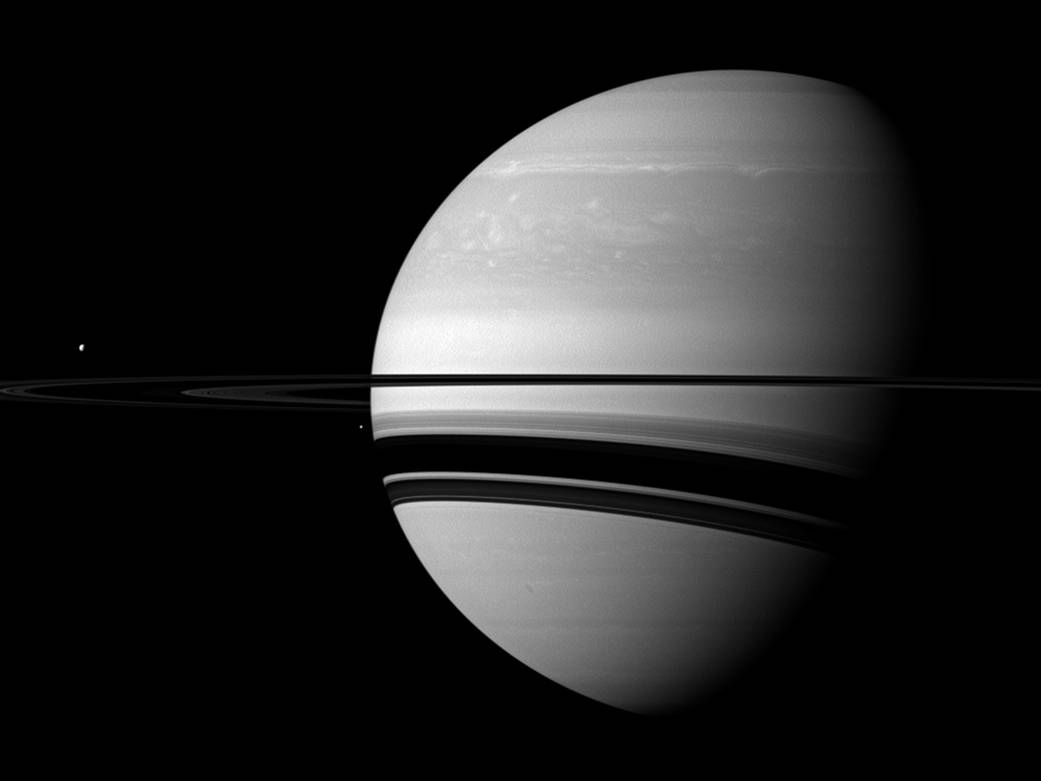
A pair of Saturn’s many moons joins the planet in this Cassini spacecraft scene.
Tethys (660 miles, or 1,062 kilometers across) appears as a small white dot above the rings on the far left of the image. Enceladus (313 miles, or 504 kilometers across) appears as a smaller bright speck beside the planet as seen from this vantage point. The rings cast wide shadows on the planet’s southern latitudes.
This view looks toward the southern, unilluminated side of the rings from about 1 degree below the ringplane.
The image was taken in visible green light with the Cassini spacecraft wide-angle camera on Jan. 19, 2012. The view was obtained at a distance of approximately 1.8 million miles (2.9 million kilometers) from Saturn and at a Sun-Saturn-spacecraft, or phase, angle of 63 degrees. Image scale is 104 miles (167 kilometers) per pixel on Saturn.
The Cassini-Huygens mission is a cooperative project of NASA, the European Space Agency and the Italian Space Agency. The Jet Propulsion Laboratory, a division of the California Institute of Technology in Pasadena, manages the mission for NASA’s Science Mission Directorate, Washington, D.C. The Cassini orbiter and its two onboard cameras were designed, developed and assembled at JPL. The imaging operations center is based at the Space Science Institute in Boulder, Colo.
For more information about the Cassini-Huygens mission visit https://www.nasa.gov/cassini and http://saturn.jpl.nasa.gov . The Cassini imaging team homepage is at http://ciclops.org
Image credit: NASA/JPL-Caltech/Space Science Institute

























